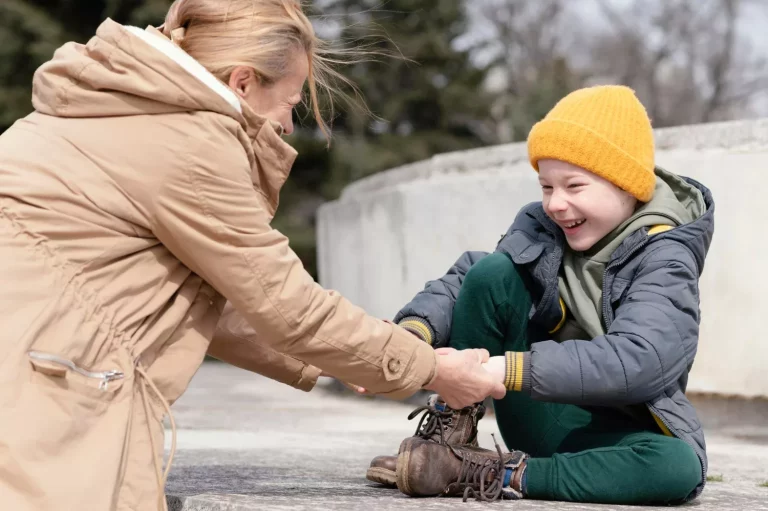Emergency Child Custody: Facts and Guidelines
Have you ever wondered what to do in an emergency child custody situation? Our team at TheBostonDivorceLawyer is here to help guide you through this challenging time. Learn about your rights and options in our latest article on emergency child custody.
As demonstrated by the legal document “Child Custody and Visitation in an Emergency” from the California Courts website, emergency child custody is granted in situations where there is a threat of immediate harm to the child. The court may issue temporary custody orders to protect the child until a formal hearing can be held to determine long-term custody arrangements. Emergency child custody can only be granted under specific circumstances outlined in the law to ensure the safety and well-being of the child (source: California Courts website).
Definition
A court may grant emergency child custody to protect a child from harm or to ensure their immediate safety and well-being. These orders are usually temporary and can be issued quickly, often without a full hearing or the involvement of everyone concerned, to handle the urgent situation.
In emergency custody cases, the court’s main focus is the child’s best interests. This means the court will prioritize the child’s safety, health, and overall welfare when deciding who should have custody. For real, the court will consider factors like the child’s relationship with each parent, each parent’s ability to provide a safe and stable home, and any history of abuse or neglect.
Emergency custody orders can include temporary visitation schedules, limits on contact with certain individuals, and requirements for supervision of the child’s care. These orders aim to keep the child safe while more permanent custody arrangements are figured out. It is very important for everyone involved to follow the emergency custody order to ensure the child’s safety and well-being.
Factors
When deciding on emergency child custody, the court looks at several important factors to ensure the child’s safety and well-being. These include:
- The child’s safety and health
- Any past abuse or neglect
- Each parent’s ability to provide a stable and loving home
- The child’s bond with each parent
- Any risk to the child if left with one parent
The court also considers the child’s age, maturity, any special needs, and overall physical and emotional health. Honestly, if the child is old enough, their wishes and preferences may also be taken into account.
Other aspects such as the living conditions of each parent, any history of substance abuse or criminal activity, financial stability, and any domestic violence or disputes between the parents are also evaluated.
The main goal is to make sure the child is safe, secure, and well-cared for. By looking at all these factors, the court aims to make a decision that ensures a stable and loving environment for the child while avoiding any potential risks.
Parental rights
Sometimes, when a child is in danger or at risk, the court might decide to give emergency custody to someone else, like a family member or social services, to keep the child safe.
This temporary change in who takes care of the child helps protect them from immediate harm. The temporary guardian can make important decisions about the child’s care, like medical treatment or providing a safe place to stay.
Believe it or not, it’s important to understand that this change is not permanent. The court can review the situation later once the emergency is over. The main goal is always the child’s safety and well-being.
Parents will have a chance to explain their side and argue against the emergency custody decision in court. The court’s final decision will focus on what is best for the child’s safety and well-being, while also considering the parents’ rights.
Legal process
Basically, the first thing you need to do is file a motion with the court to request emergency custody. This motion should explain why you need emergency custody, such as providing evidence of abuse or neglect.
After you file the motion, a hearing will be set up where both sides can present their arguments to the judge. The judge will look at the evidence and make a decision based on what is best for the child.
If the judge grants emergency custody, a temporary custody order will be issued until a more permanent solution is found. In other words, this could mean more court hearings and a deeper investigation into the situation.
During the legal process, both sides can present evidence and testimony to support their case. It’s important to follow all legal rules and steps to make sure the child’s best interests are taken care of.
The main goal of the emergency custody process is to make sure the child is safe and in the right environment. By following the legal steps and providing strong evidence, parents can work towards a solution that is best for the child.

Temporary custody
All kidding aside, temporary custody is often given when a child’s safety is in danger. It can be decided by a court, social services, or other authorities. Unlike permanent custody, temporary custody is intended to be short-term, until a long-term plan is set. During an emergency, a temporary caregiver, like a family member, friend, or foster parent, may take care of the child.
As far as I’m concerned, this helps provide stability and protection for the child during a crisis. The temporary caregiver must follow any rules set by the court or agency. After the emergency is over, the child’s custody situation might be reviewed again. Temporary custody helps keep the child safe until a permanent plan is made.
In Closure
Combining past discussions, in times of crisis, such as situations involving abuse or neglect, obtaining emergency child custody is very important to ensure the safety and well-being of a child.
What TheBostonDivorceLawyers is suggesting to put money into is, it provides a temporary solution until a more permanent custody arrangement can be established through the legal system. Acting promptly and seeking legal assistance can help protect the child from harm and secure their future.







